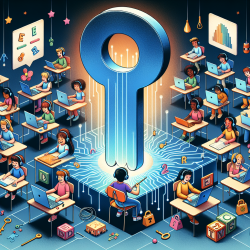The COVID-19 pandemic has necessitated a rapid adaptation in many fields, including special education and rehabilitation. One notable shift has been the increased reliance on telerehabilitation. A recent study titled Feasibility and Acceptability of a Real-Time Telerehabilitation Intervention for Children and Young Adults with Acquired Brain Injury During the COVID-19 Pandemic: An Experience Report explores this topic in depth. Here, we distill key insights from the research to help practitioners enhance their skills and encourage further investigation.
Understanding Feasibility and Acceptability
The study examined the feasibility and acceptability of a synchronous telerehabilitation intervention for children and young adults with Acquired Brain Injury (ABI). Conducted over a 10-week period, the intervention involved 13 patients and was deemed successful in both feasibility and acceptability metrics. Here are the primary takeaways:
- Technical Feasibility: Both therapists and caregivers reported high satisfaction with the technical aspects, such as sound and image quality.
- Therapeutic Relationship: The quality of the therapeutic relationship was maintained at high levels, demonstrating that a strong connection can be established even remotely.
- Patient Engagement: Consistent engagement was noted, with 100% of the patients completing the intervention, highlighting the importance of real-time interaction.
Implementing Real-Time Telerehabilitation
For practitioners looking to implement telerehabilitation, here are some actionable steps based on the study's findings:
- Leverage Technology: Ensure that both the therapist and patient have access to reliable technology. This includes a computer with a webcam, stable internet connection, and user-friendly software like Google Meet.
- Maintain Engagement: Utilize real-time video calls to simulate in-person sessions. This helps in maintaining a high level of patient engagement and adherence to the treatment plan.
- Customize Treatment Plans: Tailor the intervention to meet the specific needs of each patient. Personalized goals and exercises can significantly improve the effectiveness of the therapy.
- Include Caregivers: Involve caregivers in the process to assist with technical setup and to provide additional support during sessions.
Encouraging Further Research
While the study provides promising results, it also highlights the need for further research. Practitioners are encouraged to explore additional aspects of telerehabilitation, such as its long-term efficacy and applicability to other types of impairments.
To read the original research paper, please follow this link: Feasibility and Acceptability of a Real-Time Telerehabilitation Intervention for Children and Young Adults with Acquired Brain Injury During the COVID-19 Pandemic: An Experience Report.










